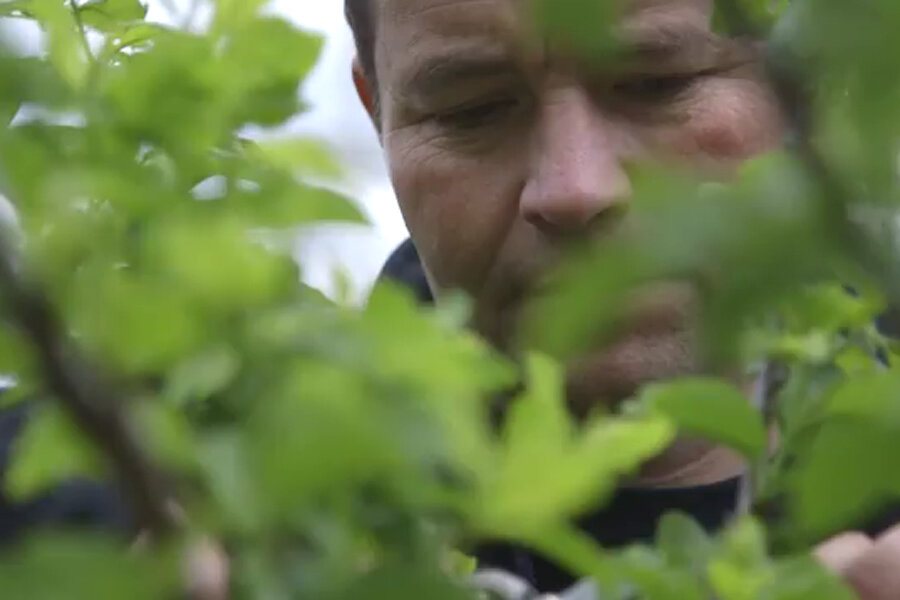How Sam Van Aken created one tree that bears 40 different kinds of fruit
When Sam Van Aken was growing up, he had no idea that the farming practice of grafting – growing one kind of tree on the trunk or branch of another variety – would one day create extraordinary, living art.
"The idea came from a fascination with the process of grafting," Mr. Van Aken, associate professor of sculpture in the School of Art at Syracuse University, told National Geographic. "When I'd seen it done as a child, it was Dr. Seuss and Frankenstein and just about everything fantastic."
In a 9-year process, Van Aken has grafted branches from as many as 40 varieties of stone fruit trees (those with pits, such as peaches and plums) onto a single existing tree. The result is a vernal burst of pink, red, and white flowers that develops into 40 different kinds of fruit all on one tree. Yet, what started as a plan for a living sculpture turned into a work of conservation, sustainability, business, and more.
As he began to investigate where he could get several different kinds of stone fruits, he began to realize that commercial fruit growing has focused on very few varieties. Size, color, and shelf-life are the major determining factors for commercial growers, leaving out the vast majority of what could be available.
“I realize the extent to which we’ve created these massive mono-cultures,” Van Aken told an audience at a TEDx conference in New York last year. He explained that many fruits, rather than being grown in the several places that could sustain them, now are primarily grown in very small regions. “The majority of stone fruits are grown in the central valley in California, while the majority of apples are grown in New York and Washington state,” he said. But why is any of this a problem?
The professor sees these practices as seriously decreasing the variety of foods Americans have available to eat and limiting their sources even more. For example, California is experiencing one of its worst droughts in recorded history. Fruit trees consume a lot of water, and most of the stone fruits are grown in a place that currently doesn’t have much. New York regularly has late frosts that kill the buds on growing apples trees, sometimes rendering entire crops useless. Natural events such as these drive up food prices and impact the quality of the food that makes it to market.
As food affordability and availability both become pressing issues, a tree such as Van Aken’s might seem like a ray of hope. “It definitely won't cure world hunger," Van Aken told Business Insider in a 2014 interview. "But I hope that it could inspire that type of thinking."
Van Aken did eventually find an orchard in Geneva, N.Y., that had many heirloom and antique varieties of stone fruits. Learning that the orchard had lost its funding as an experimental growing facility, Van Aken took over the lease and has been grafting to his heart’s content ever since.
He has trees in places across the US, including Massachusetts, California, New Jersey, and Kentucky. He’s recently expanded his orchard work into Maine, where the fruit will be available for sale to the public. And, if you’ve got about $30,000 to invest in edible art, you could own one of Van Aken’s trees. All proceeds benefit the conservation of heirloom and antique varieties of stone fruits.





